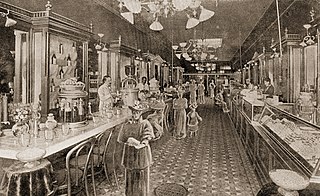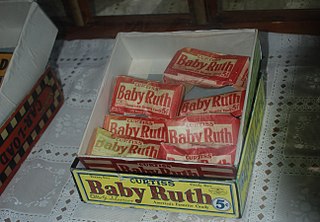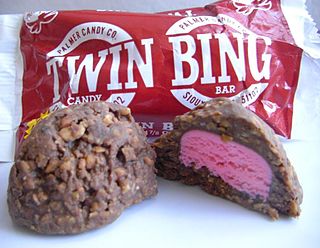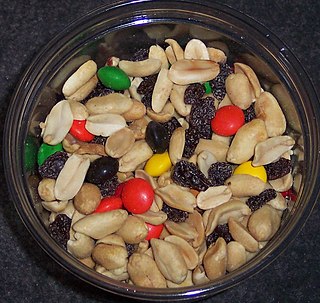3 Musketeers is a chocolate bar made in the United States and Canada by Mars, Incorporated. It is a candy bar consisting of chocolate-covered, fluffy, whipped nougat. It is a lighter chocolate bar similar to the global Milky Way bar and similar to the American version Milky Way bar only smaller and without the caramel topping. The 3 Musketeers Bar was the third brand produced and manufactured by M&M/Mars, introduced in 1932. Originally, it had three pieces in one package, flavored chocolate, strawberry and vanilla; hence the name, which was derived from the 1844 novel The Three Musketeers by Alexandre Dumas. Rising costs and wartime restrictions on sugar saw the phasing out of the vanilla and strawberry pieces to leave only the more popular chocolate. Costing five cents when it was introduced, it was marketed as one of the largest chocolate bars available, one that could be shared by friends.

Whitman's is one of the largest and oldest brands of boxed chocolates in the United States. Whitman's confections have been produced since 1842, originally by Stephen Whitman in Philadelphia and currently by Kansas City, Missouri-based Russell Stover Candies.

The Curtiss Candy Company was founded in 1916 by Otto Schnering near Chicago, Illinois. Wanting a more "American-sounding" name, Schnering named his company using his mother's maiden name.

The Idaho Spud is a candy bar made by the Idaho Candy Company. It has been produced since 1918 and is distributed primarily throughout the Pacific Northwest region of the United States. The wrapper of the product bears the slogan "The Candy Bar That Makes Idaho Famous." The bar was invented by Thomas "T.O." Smith, who founded the Idaho Candy Company in 1901.

Cherry Mash is an American candy bar consisting of a soft, cherry-flavored center containing maraschino cherries, covered in a mixture of chopped roasted peanuts and chocolate.

Rocky road is a type of no-bake slice made up of milk chocolate and marshmallows along with other ingredients, which tend to vary by country. In British influenced areas it's traditionally referred to as 'Tiffin' but the Australian/American name is becoming more common. It is usually served in individual portions such as a brownie, or in American cuisine, as an ice cream flavor.

The Twin Bing is a candy bar made by the Palmer Candy Company of Sioux City, Iowa. It consists of two round, chewy, cherry-flavored nougats coated with a mixture of chopped peanuts and chocolate. The company also produces individual Bings, as well as the King Bing, a package of three. The Twin Bing was introduced in the 1960s, possibly in 1969, according to Marty Palmer, the 5th-generation president of the Palmer Candy Company, and has been called "one of Sioux City's quintessential treats".
The U-NO Bar is produced by the Annabelle Candy Company.
The Hollywood Candy Company, or Hollywood Brands, was an American confectionery company formed in Hollywood, Carver County, Minnesota, in 1912 by Frank Martoccio.
The following outline is provided as an overview of and topical guide to chocolate:

A candy bar is a type of candy that is in the shape of a bar. The most common type of candy bar is the chocolate bar, including both bars made of solid chocolate and combination candy bars, which are candy bars that combine chocolate with other ingredients, such as nuts, caramel, nougat, or wafers.

A snack is a small portion of food generally eaten between meals. Snacks come in a variety of forms including packaged snack foods and other processed foods, as well as items made from fresh ingredients at home.










